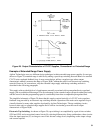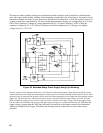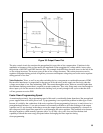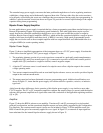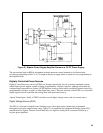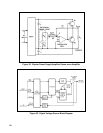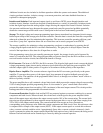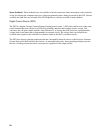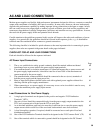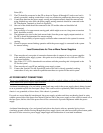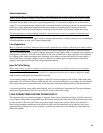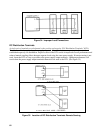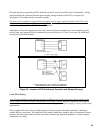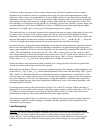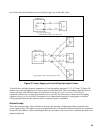
59
AC AND LOAD CONNECTIONS
Modern power supplies are flexible, high-performance instruments designed to deliver a constant or controlled
output with a maximum of reliability and control versatility. In many cases, however, the user inadvertently
degrades this performance capability by making improper wiring connections to the input or output. At best,
this can result in excessive output ripple, a tendency toward oscillation, poor load and line regulation, and
unnecessary degradation of stability, temperature coefficient, and transient recovery specifications. At worst,
the result can be power supply failure and potential shock hazards.
Careful attention to the guidelines presented in this section will improve the safety and usefulness of power
supplies. As a general rule, the guidelines should be followed in the sequence given, e. g., dc distribution
terminals must be considered before common or ground connections.
The following checklist is included for quick reference to the most important rules in connecting dc power
supplies; these rules are repeated with greater detail on the pages indicated.
CHECKLIST FOR AC AND LOAD CONNECTIONS
Each rule should be followed in the sequence indicated.
AC Power Input Connections
Page
1. The ac, acc and third wire safety ground continuity should be retained without accidental
interchange from ac power outlet to the power supply input terminals.
60
2. If an autotransformer (or isolation transformer) is connected between the ac power source and
the power supply input terminals, it should be rated for at least 200% of the maximum rms
current required by the power supply.
61
3. The autotransformer common terminal should be connected to the acc (not ac) terminals of
both the power supply and the input power line.
61
4. Most ac input line regulators should not be used with regulated power supplies without first
checking with the power supply manufacturer.
61
5. When connecting ac to a power supply, it is necessary to use a wire size which is rated to carry
at least the maximum power supply input current.
61
Load Connections for One Power Supply.
6. A single pair of terminals are designated as the positive and negative "DC Distribution
Terminals" (DT's).
62
7. One pair of wires should be connected directly from the power supply output terminals to the
DT's, and a separate pair of leads from the DT's to each load.
63
8. As an absolute minimum, each load wire must be of sufficient size to carry the power supply
output current which would flow if the associated load terminals were short circuited.
63
9. A local decoupling capacitor, if required, should be connected across each pair of load and
distribution terminals.
64
10. One of the DC Distribution Terminals should be designated as the "DC Common Point" (CP). 68
11. One of the terminals which is connected to ground should be designated as the DC Ground 72



